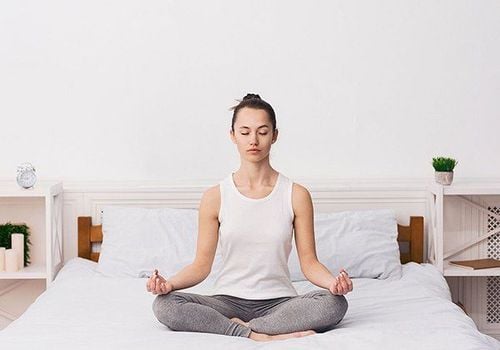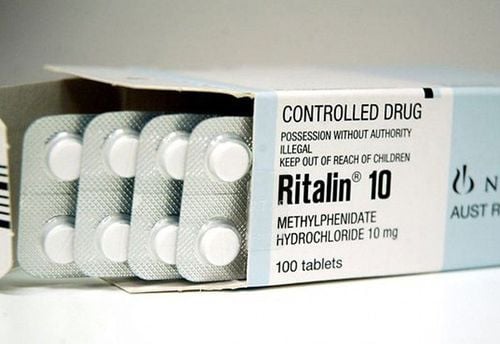This is an automatically translated article.
Attention Deficit Hyperactivity Disorder (ADHD) is a common disorder in children and has been on the rise in recent years. Disease disorders can affect the patient's learning, working and social relationships. Meditation and yoga exercises can improve focus for people with ADHD.1. What is Attention Deficit Hyperactivity Disorder?
Attention Deficit/Hyperactivity Disorder (ADHD) is a common disorder in children and is on the rise in recent times. The prominent features of patients with attention deficit hyperactivity disorder are often difficulties in regulating concentration, difficulty controlling behaviors, emotions, overactivity, frequent excitement. and agitation,... The disorder may affect the patient's learning, working and social relationships.Patients with ADHD often show surprise, confusion, forgetfulness, difficulty starting, maintaining a task or controlling attention, some children often show no signs of cooperation, avoidance of contact,... There are many methods to treat attention deficit hyperactivity disorder such as using drugs, paying attention to diet, and psychological therapies,... Medicines and therapies Treatments are good ways to manage a person's symptoms of attention deficit hyperactivity disorder (ADHD). However, this is not the only option in a patient's treatment. Meditation and yoga exercises will help patients improve their concentration, as well as control their actions.
2. Exercises for people with attention deficit hyperactivity disorder
2.1 Meditation Research now shows that mindfulness meditation is an active way of observing one's thoughts and emotions from moment to moment, and it can also be a good way to calm the mind and improve focus. for the patient. More than a third of adults with attention deficit hyperactivity disorder use this method, and about 40% give it a high rating, according to a 2017 survey by the journal ADDitude.When a muscle is weak, the patient can do exercises to make muscle gain and stronger. The same goes for the brain. Mindfulness meditation enhances the patient's ability to control attention. It teaches patients how to observe themselves and focus on something. In particular, training to bring the mind wandering back to a time when the patient was distracted. Meditation can also help people become more aware of their emotions, making them less likely to act impulsively.
Unlike other treatments, mindfulness meditation doesn't require a prescription or a trip to a therapist's office. Patients can practice it while sitting or walking, or even through some type of yoga. Meditation is thought to help people with ADHD, because it thickens the prefrontal cortex, the part of the brain involved with concentration, planning, and impulse control. In addition, it also increased the level of dopamine in the patient's brain, which is deficient in the brain of people with attention deficit hyperactivity disorder.

Thiền được cho là có ích với những người mắc chứng rối loạn tăng động giảm chú ý
2.2 Practice yoga Yoga not only makes the body flexible, it has also been shown to improve symptoms of ADHD, although most studies have been done with children. . Like mindfulness meditation, daily yoga practice increases dopamine levels and strengthens the prefrontal cortex. One study found that kids who did 20-minute yoga poses twice a week for eight weeks improved on tests measuring concentration and attention.
Yoga practice is a combination of postures, breathing exercises and meditation techniques, helping to develop the brain, the connection between the body and the mind. Yoga is also a tool to support self-regulation of behavior. Intervention to treat attention deficit hyperactivity disorder with behavioral therapy is considered a non-medical, long-term effective treatment for patients. Therefore, the reciprocal benefits of yoga practice in terms of physicality include increased awareness of the body.
An organized and methodical response in activity, or repeated movements of the body when performing poses in yoga will help the patient to organize and control the body. Balanced, coordinated poses help organize the brain and stimulate the nervous system. In addition, the repetitive movements will stretch the muscles, increase blood circulation in the body, and increase the flexibility and strength of the muscles. Especially the balancing and stable postures in yoga can stimulate the cerebellum (the part of the brain that controls coordination and balance in movement).

Tập yoga giúp cải thiện các triệu chứng của rối loạn tăng động giảm chú ý
Please dial HOTLINE for more information or register for an appointment HERE. Download MyVinmec app to make appointments faster and to manage your bookings easily.
Reference source: webmd.com












